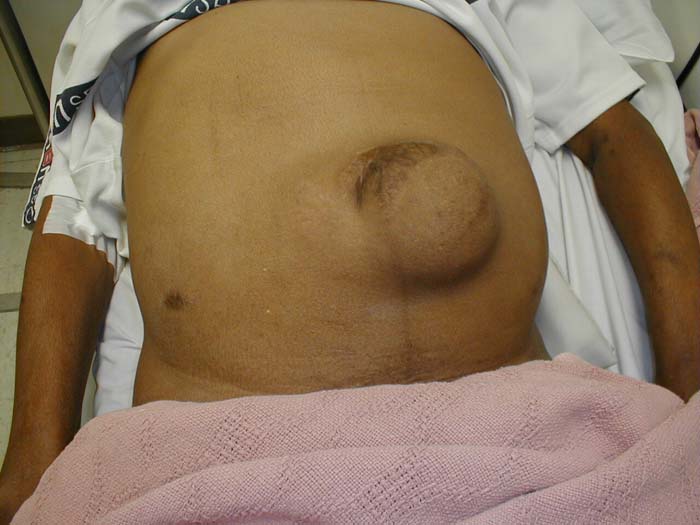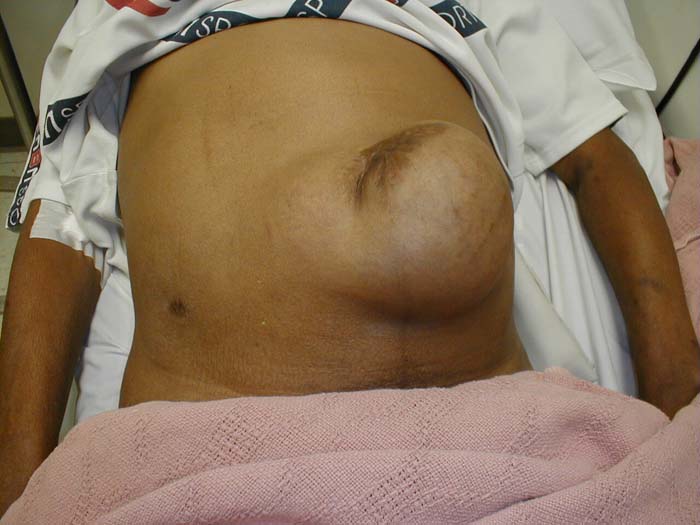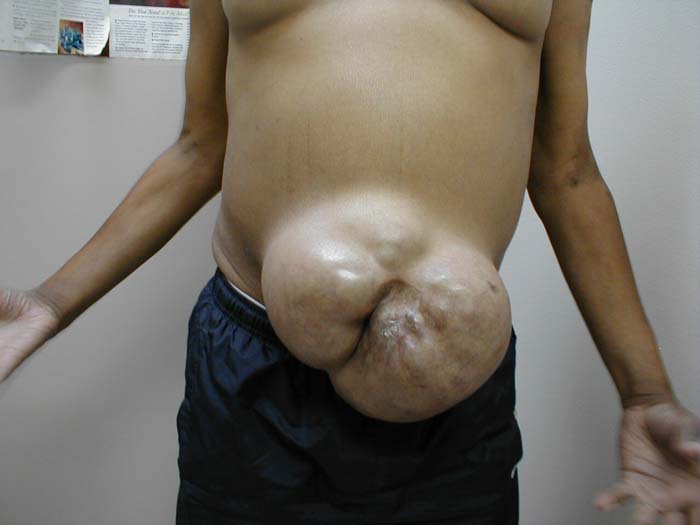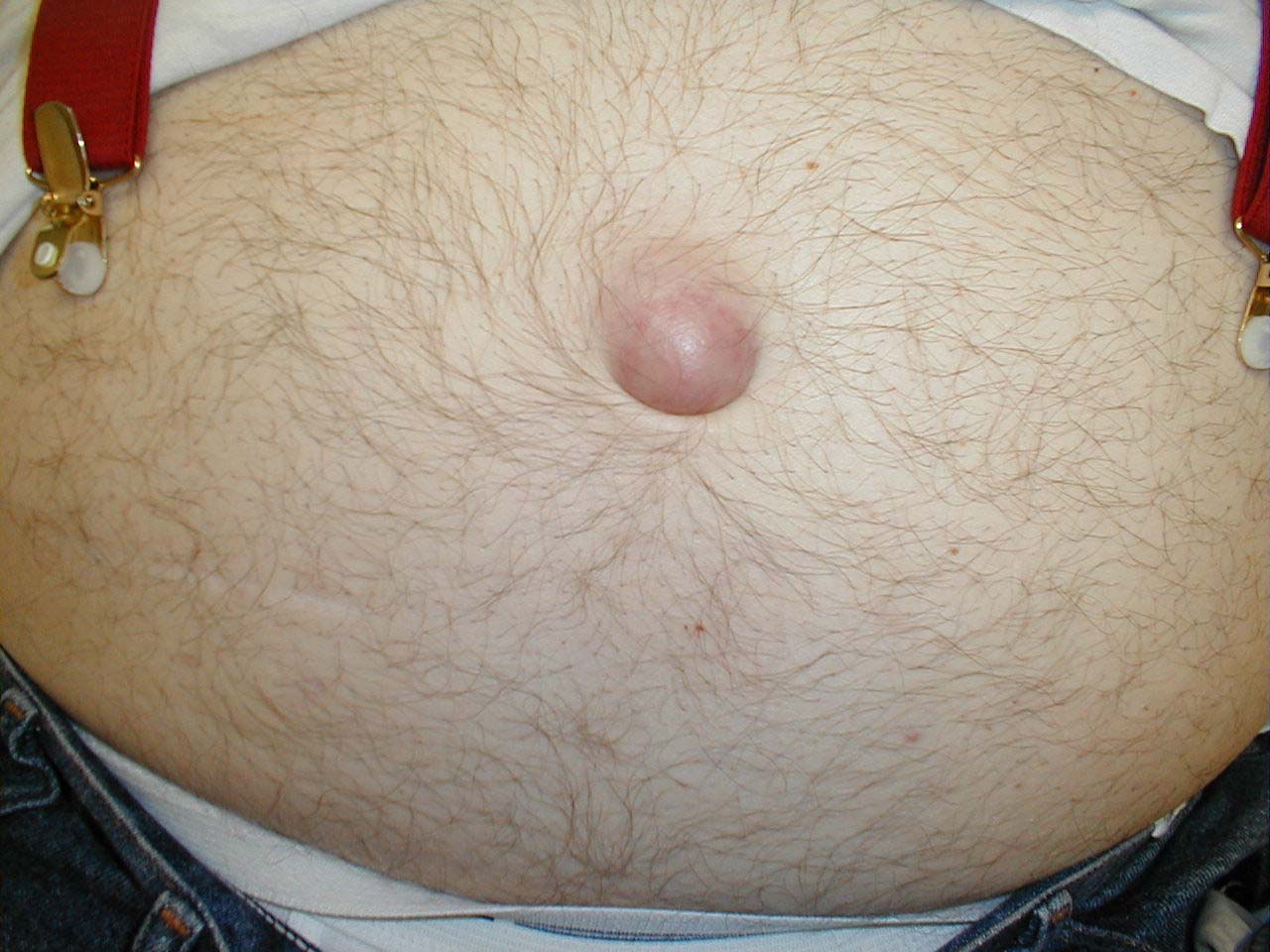Umbilical hernia: Difference between revisions
No edit summary |
No edit summary |
||
| Line 1: | Line 1: | ||
{{Infobox_Disease | {{Infobox_Disease | ||
| Name = {{PAGENAME}} | | Name = {{PAGENAME}} | ||
| Image = | | Image = | ||
| Caption = | | Caption = | ||
| DiseasesDB = 23647 | | DiseasesDB = 23647 | ||
Revision as of 11:49, 15 April 2012
| Umbilical hernia | |
| ICD-10 | K42 |
|---|---|
| ICD-9 | 551-553 |
| DiseasesDB | 23647 |
| MedlinePlus | 000987 |
| MeSH | D006554 |
For patient information click here
|
WikiDoc Resources for Umbilical hernia |
|
Articles |
|---|
|
Most recent articles on Umbilical hernia Most cited articles on Umbilical hernia |
|
Media |
|
Powerpoint slides on Umbilical hernia |
|
Evidence Based Medicine |
|
Clinical Trials |
|
Ongoing Trials on Umbilical hernia at Clinical Trials.gov Trial results on Umbilical hernia Clinical Trials on Umbilical hernia at Google
|
|
Guidelines / Policies / Govt |
|
US National Guidelines Clearinghouse on Umbilical hernia NICE Guidance on Umbilical hernia
|
|
Books |
|
News |
|
Commentary |
|
Definitions |
|
Patient Resources / Community |
|
Patient resources on Umbilical hernia Discussion groups on Umbilical hernia Patient Handouts on Umbilical hernia Directions to Hospitals Treating Umbilical hernia Risk calculators and risk factors for Umbilical hernia
|
|
Healthcare Provider Resources |
|
Causes & Risk Factors for Umbilical hernia |
|
Continuing Medical Education (CME) |
|
International |
|
|
|
Business |
|
Experimental / Informatics |
Editor-In-Chief: C. Michael Gibson, M.S., M.D. [1]
Please Take Over This Page and Apply to be Editor-In-Chief for this topic: There can be one or more than one Editor-In-Chief. You may also apply to be an Associate Editor-In-Chief of one of the subtopics below. Please mail us [2] to indicate your interest in serving either as an Editor-In-Chief of the entire topic or as an Associate Editor-In-Chief for a subtopic. Please be sure to attach your CV and or biographical sketch.
Overview
Umbilical hernia is a congenital malformation, especially common in infants of African descent,[1] and more frequent in boys.
Presentation
A hernia is present at the site of the umbilicus (commonly called a navel, or belly button) in the newborn; although sometimes quite large, these hernias tend to resolve without any treatment by around the age of 5 years. Obstruction and strangulation of the hernia is rare because the underlying defect in the abdominal wall is larger than in an inguinal hernia of the newborn.
Babies are prone to this malformation because of the process during fetal development by which the abdominal organs form outside the abdominal cavity, later returning into it through an opening which will become the umbilicus.
Differential diagnosis
Importantly this type of hernia must be distinguished from a para-umbilical hernia which occurs in adults and involves a defect in the midline near to but not through the umbilicus, and from omphalocele.
Treatment
When the orifice is small (< 1 or 2cm), 90% closes within 3 years (some sources state 85% of all umbilical hernias, regardless of size[2]), and if these hernias are asymptomatic, reducible, and don't enlarge, no surgery is needed (and in other cases it must be considered). However, in some communities mothers routinely push the small bulge back in and tape a coin over the palpable hernia hole until closure occurs. This practice is not medically recommended as there is a small risk of trapping a loop of bowel under part of the coin resulting in a small area of ischemic bowel. The use of bandages or other articles to continuously reduce the hernia is not evidence-based.
In adults
Umbilical hernias in adults are largely acquired, and more frequent in pregnant women. Abnormal decussation of fibers at the linea alba may contribute.
It is theorized that cutting the umbilical at birth is a cause of umbilical hernia. Allowing the umbilical cord to fall off naturally may eliminate chance of umbilical hernia in infants.
Umbilical hernia has been reported as a complication of a transjugular intrahepatic portosystemic shunt.[3]
An umbilical hernia can be fixed 2 different ways. The surgeon can opt to stitch the walls of the abdominal or he/she can pleace mesh over the opening and stitch it to the abdominal walls. The later is of a stronger hold and is commonly used for larger tears in the abdominal wall.
Pregnant woman are suseptible to hernias. There are times that the uterus may block the bowels from coming through the opening, but these cases are rather rare. 6 weeks after the baby is born, most surgeons will repair the hernia.
(Images courtesy of Charlie Goldberg, M.D., UCSD School of Medicine and VA Medical Center, San Diego, California)
-
Umbilical Hernia: Protrusion of intra-abdominal contents through defect in posterior fascia.
-
Umbilical Hernia: In this case the increase in size seen in the picture on the right is caused by asking the patient to perform the valsalva maneuver.
-
Huge Umbilical Hernia: Umbilical hernia exacerbated by refractory ascites. Advanced liver disease precluded operative repair in this case.
-
Incarcerated Umbilical Hernia: Note reddened umbilical area resulting from entrapment of intra-abdominal contents in hernia. When this occurred, the patient developed acute pain in this region.
Information for patients for pediatric umbilical hernia
See also
References
- ↑ "eMedicine - Abdominal Hernias : Article by Eustace S Golladay". Retrieved 2007-10-16.
- ↑ "Umbilical Hernia - DrGreene.com". Retrieved 2007-10-16.
- ↑ Mallavarapu RK, Grimsley EW (2007). "Incarcerated umbilical hernia after transjugular intrahepatic portosystemic shunt procedure for refractory ascites". Clin. Gastroenterol. Hepatol. 5 (9): A26. doi:10.1016/j.cgh.2007.07.018. PMID 17825762.
External links
- Overview at Cincinnati Children's Hospital Medical Center
- Overview at Penn State
- Hernia Resources
- The Hernia Blog
- Hernia Symptoms
- Hernia umbilical adult: Information for patients on Wikisurgery.
- Hernia umbilical child: Information for patients on Wikisurgery
- Hernia umbilical child: Operation Script on Wikisurgery
Template:SIB Template:Gastroenterology id:Bodong it:Ernia#Ernia ombelicale nl:Navelbreuk



